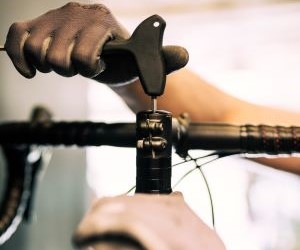HOW DO I AVOID MECHANICAL FAILURES IN RACES?
Mechanical failures can derail months of preparation in seconds. A dropped chain, a puncture, or a misaligned derailleur doesn’t just cost time—it can cost the race. Yet most mechanical issues aren’t bad luck; they’re preventable with the right maintenance habits, equipment checks, and contingency planning. From pre-race inspections to mid-race troubleshooting, this guide breaks down everything you need to know to minimize risks. Whether you’re racing triathlons, road cycling, or gravel endurance events, mastering mechanical reliability is as important as physical training.

Pre-race preparation and checks
The foundation of avoiding race-day mechanical failures is meticulous preparation. Most issues stem from overlooked maintenance or rushed last-minute adjustments. A structured pre-race checklist ensures your bike is optimized for performance and reliability.
Conducting a full bike inspection
Check every critical component systematically. Drivetrain parts (chain, cassette, chainrings) should be clean, lubricated, and free from wear. Inspect brake pads, cables, or hydraulic fluid levels to guarantee stopping power. Tires must be checked for cuts, punctures, or worn tread. Wheels should spin true without wobbles or loose spokes.
Verify bolts (stem, handlebar, seatpost) are torqued to manufacturer specs.
Check shifting under load to ensure smooth gear transitions.
Test brakes at high and low speeds.
Inflate tires to recommended pressure and check sealant (for tubeless setups).
Scheduling maintenance before race week
Avoid making major changes—like installing new components or switching tires—immediately before the race. Schedule tune-ups 2–3 weeks ahead, giving you time to test the setup under training conditions. Many failures occur because athletes ride untested equipment on race day.
Packing essential spares and tools
Carrying minimal spares can make the difference between finishing and a DNF. At minimum, pack tubes or tubeless plugs, a multi-tool, CO₂ inflator or pump, and quick-link for chain repair. Practice using them during training so you can troubleshoot under race stress.
Pre-race preparation eliminates the majority of risks. A disciplined approach to maintenance ensures you start with a reliable machine, not a gamble.
Smart equipment choices
Equipment decisions directly influence reliability. Riders often chase aerodynamic gains or weight savings at the expense of durability. Race equipment should balance performance with proven dependability across the course profile and conditions.
Selecting tires wisely
Flat tires are the most common mechanical in races. Choosing tires with puncture protection and adequate width significantly reduces risk. For road races, 25–28mm tires balance speed and resilience. For gravel, tubeless setups with sealant provide superior puncture defense. Avoid starting on worn or untested rubber.
Balancing weight and durability
Lightweight parts can compromise reliability if they’re not designed for racing stress. Carbon seatposts, ultralight saddles, or paper-thin tires may save grams but increase failure risk. Opt for trusted, race-tested gear rather than last-minute experimental setups.
Choose tires designed for the specific race terrain.
Run pressures appropriate for conditions—too high risks blowouts, too low risks pinch flats.
Select drivetrains with proven reliability, even if they aren’t the newest.
Avoiding last-minute changes
Many failures come from athletes trying new wheels, pedals, or electronic groupsets just days before competition. Even high-end gear needs testing time. If you must change equipment, allow at least two weeks of riding to confirm integration and performance.
The smartest choice is equipment that may not be flashy but has proven reliable in training. In races, dependability beats novelty every time.
In-race habits and contingency planning
Even with meticulous preparation, the chaos of racing introduces variables. Potholes, crashes, and weather can trigger mechanicals. Developing smart riding habits and having contingency plans ensures small issues don’t escalate into race-ending problems.
Protecting your equipment during the race
Avoid unnecessary risks that stress your bike. Don’t bunny-hop curbs unless absolutely necessary, and approach technical sections with caution. Shifting under maximum torque on steep climbs can snap chains—anticipate gear changes early to protect drivetrain longevity.
Staying calm during mechanical setbacks
If something does go wrong, panic only wastes time. Practice neutral support etiquette or self-repair in training so you can act quickly. Knowing how to fix a dropped chain, adjust a derailleur, or plug a tire under pressure turns potential disaster into minor delay.
Anticipate shifting to lighter gears before climbs.
Scan road surfaces constantly to avoid hazards.
Carry tools you’re confident using, not just tools for show.
Building mental resilience
Mechanical issues, even small ones, can be mentally crushing. Adopting a mindset that treats setbacks as solvable problems preserves focus. Many races are won not by those without issues but by those who handled them most effectively. Training your mind to stay composed is as important as training your body to ride hard.
Race-day success depends on minimizing risks and responding decisively when issues arise. With preparation, smart choices, and composure, mechanical failures don’t have to dictate outcomes.






